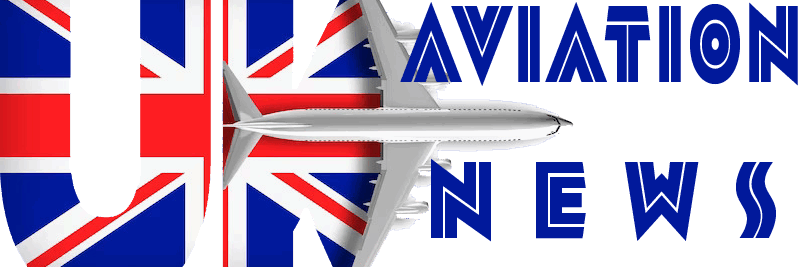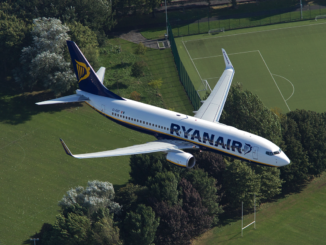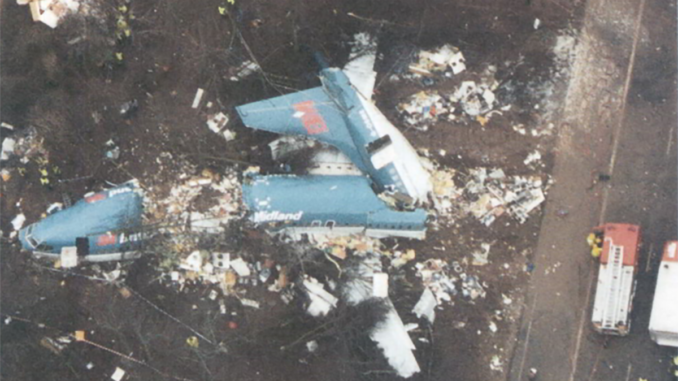
At 19:52 on the evening of 8th January 1989 British Midland flight 92 took off from London Heathrow bound for Belfast International Airport. 42 minutes later 47 people on board would be dead due in part to confusion.
The Boeing 737-400 (G-OBME) took off from Heathrow as normal and the flight was uneventful as the aircraft passed through 28,000ft until the aircraft suddenly started vibrating and a small of burning entered the cabin.
The Captain, Kevin Hunt, and his co-pilot, First Officer David McClelland, immediately recognised an engine failure and Hunt asked his first officer which engine it was.
Initially, McClelland replied Left, before changing his mind to right.
The crew shut down the right engine and the smell of smoke dissipated as did the vibration and they elected to divert to East Midlands starting their descent.
On approach to East Midlands Airport the crew established the single engine approach and when engine power from the remaining left engine was requested, it failed.
Powerless, the engine slid below the glideslope and impacted the ground initially near the village of Kegworth before bouncing onto the M1 and crashing into the motorway embankment just metres from the threshold of runway 27 at East Midlands.
The aircraft broke into three main sections but luck did not explode or catch fire.
Of the 126 people on board, 47 people were killed in the impact and 74 suffered serious injuries. Both the Captain and the Co-Pilot survived.
Miraculously, despite landing on Britains busiest motorway, the aircraft didnt hit a single vehicle.
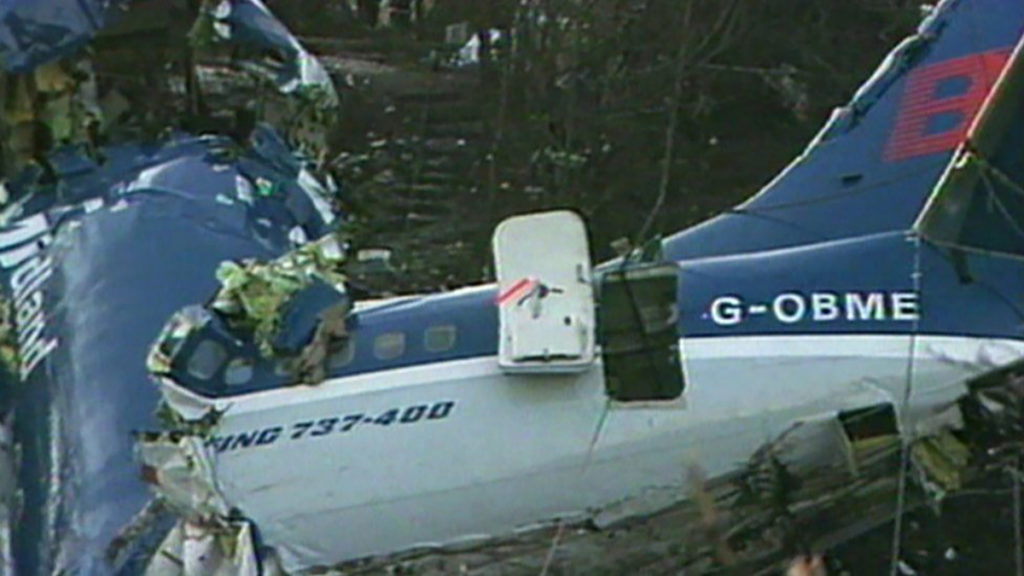
What went wrong?
Questions immediately began to be asked about how a brand new airliner, ME had only been in service for 85 days, could suffer a dual engine failure. Both the 737 and CFM-56 engines were not new technology and well tested.
As the Air Accident Investigations Branch (AAIB) carried out their investigation it quickly became evident that the right hand engine was in fact ok and had not suffered an in-flight engine failure so attention turned to why the crew had shut down a functioning engine, and left a failing one running.
What emerged raised questions about type training when aircraft systems changed.
On previous versions of the 737, which both pilots had extensive experience on, the Left engine supplied bleed air to the cockpit while the right supplied air to the cabin. This caused McClelland to almost ignore the vibration indicators and use his “experience” to diagnose it based on the lack of smell in the cockpit.
Captain Hunt himself said that his perception of smoke as coming forward from the passenger cabin led them to assume the fault was in the right engine
Unfortunately, on the newer -400 model, the left engine supplied the cockpit and the aft cabin.
As a consequence of disengaging the autopilot and autothrottle and starting an emergency descent into East Midlands, the left-hand engine was also throttled back which meant the vibration stopped also giving the appearance that they had resolved the problem.
As it turned out the a fan blade had broken off in the left engine.
When pilot’s then required power from the left engine on final approach it ceased working completely and despite a desperate attempt to restart the right-hand engine, the aircraft was doomed.
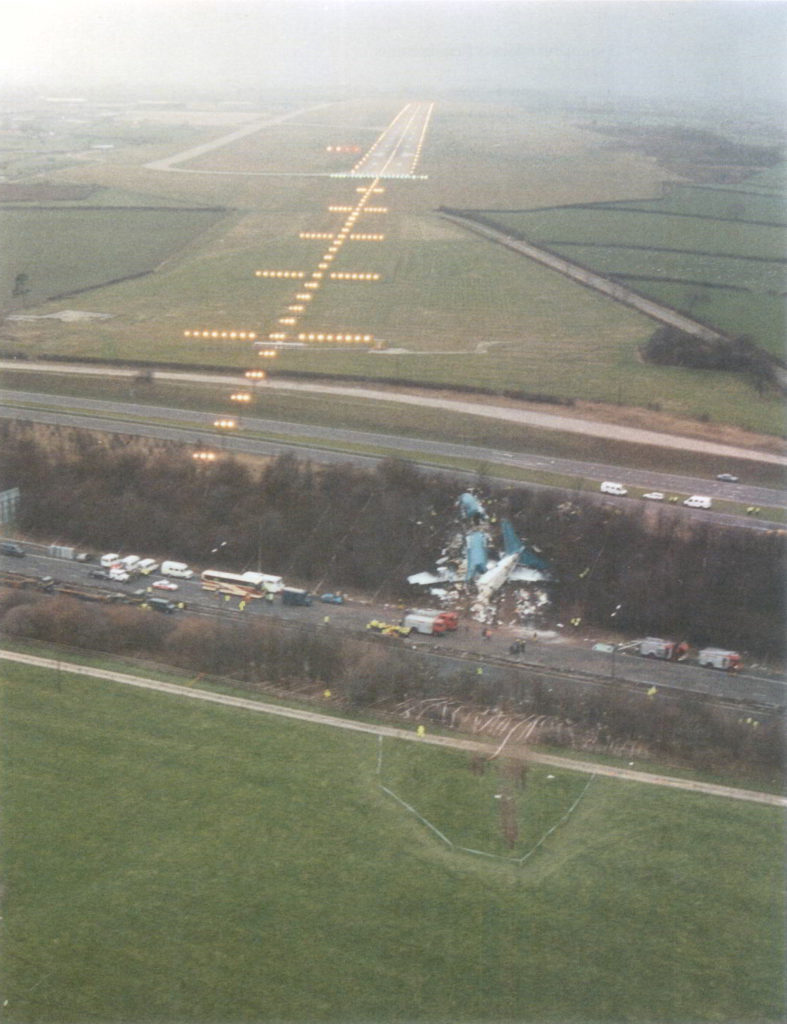
The Blame Game
The official report into the accident concluded that the cause of the accident was that “the operating crew shut down the No2 engine after a fan blade had fractured in No1 engine. This engine subsequently suffered a major thrust loss due to secondary fan damage after power had been increased during the final approach to land.”
The AAIB noted that while the training had met Civil Aviation Authority (CAA) requirements, neither pilot had been required to train in the simulator for an engine failure on the newer -400 model.
They said the combination of vibration and smell of smoke fell outside of their training and experience.
The report made several recommendations with regards to the engines themselves in terms of increasing inspections, particularly of fan blades.
It also recommended that the CAA review the the training and crew attitudes to vibration indicators on the flight deck and ensure crews are aware of the importance of these instruments in emergencies.
Crew Co-operation
One thing noted in the report was that passengers had informed cabin crew that they had seen fire from the left-hand engine. As a result the AAIB said there should be regular exercises between flight crew and cabin crew to increase co-operation and coordination of information in an emergency.
Survivability
The AAIB also did extensive work during the investigation to understand the survivability of the accident and in particular looked at how the aircraft seats reacted and what could be done to improved safety in the future.
They recommended that the CAA initiate research into Cabin Floor design in order to make it stronger as well as seats themselves with particular attention to upper torso restraints.
It also highlighted injuries to a mother and child in seat 3F which they said highlighted the need for children to have their own seats rather than sit on a parents lap.
Much of the result of that research now exists on the the aircraft we fly today and survivability as a result is much higher.
